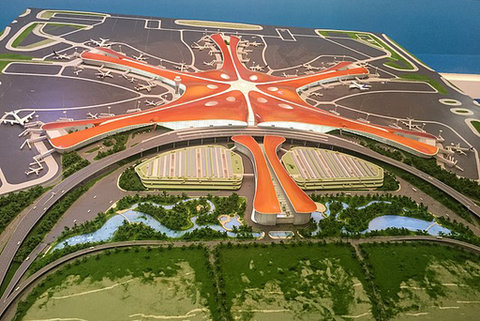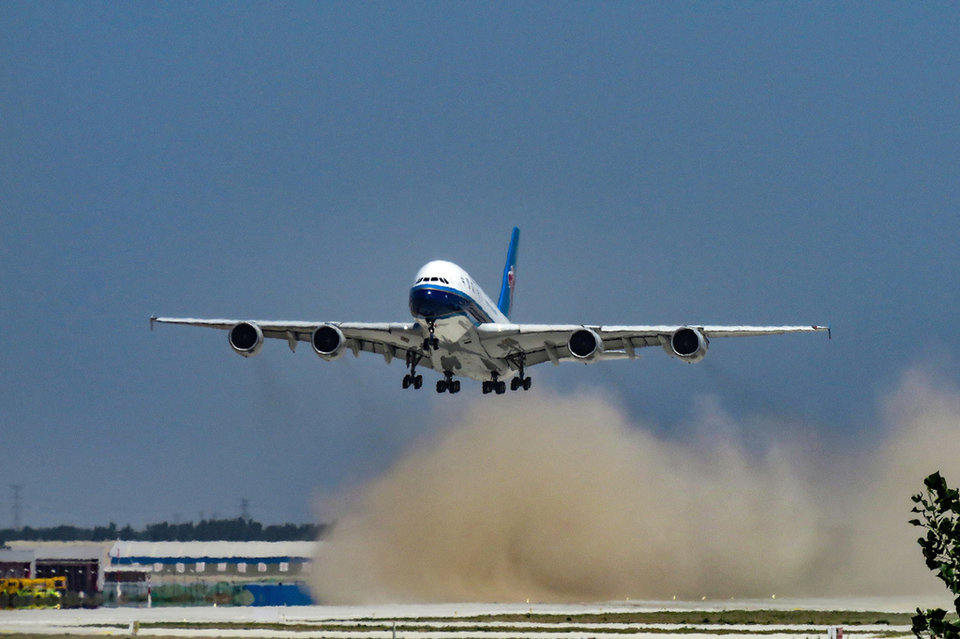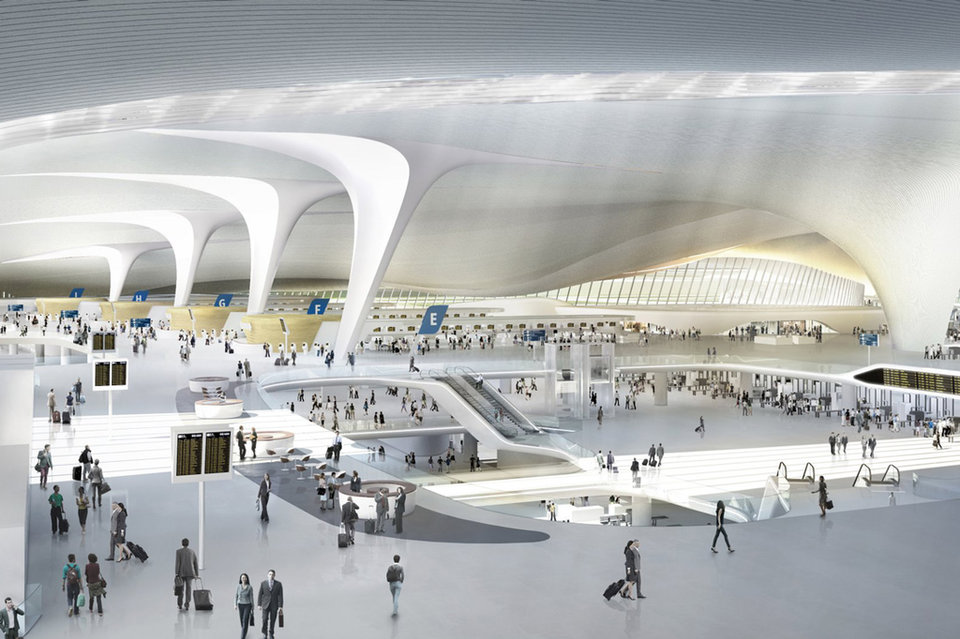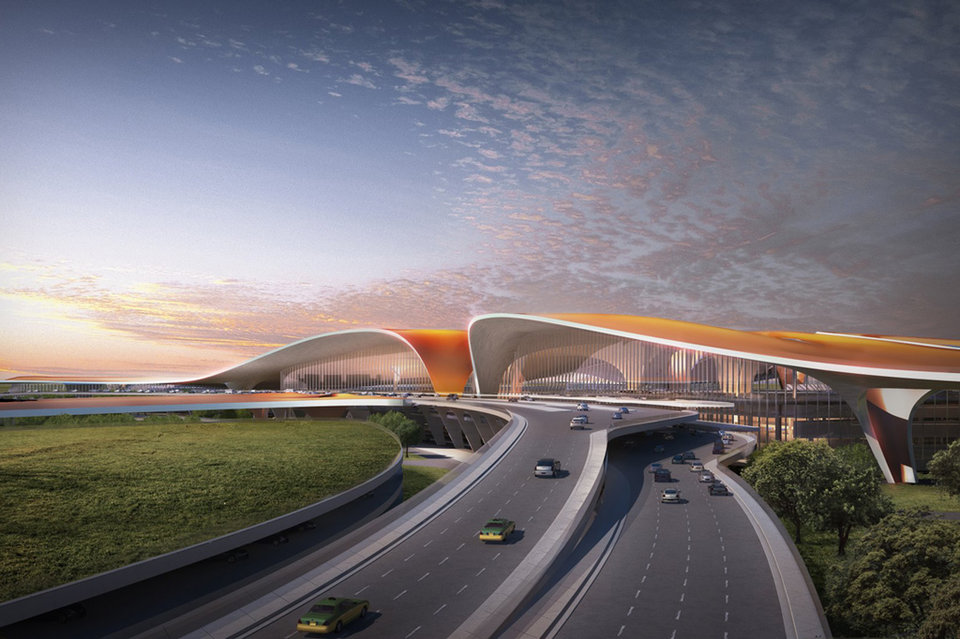Airport Projects
Beijing Daxing Airport: a giant prepares for take-off
China’s $13bn Beijing Daxing International Airport will eventually cater for around 100 million passengers a year. As the super structure nears completion, Heidi Vella takes a closer look at the behemoth project and its role in the region’s busy aviation system
Commissioned in 2014, the hotly anticipated Beijing Daxing International Airport is expected to be ready for commercial flights as soon as this September. To show construction of the mega project is on schedule, planes from four Chinese airlines touched ground safely at the airport’s freshly laid concrete runways during test trials in May.
Once completed, Daxing will alleviate pressure on the city’s other airport, Beijing Capital International, which had a new $4bn terminal constructed in time for the 2008 Olympics. Last year, the airport, which serves nearly 100-million passengers a year, was ranked the second busiest in the world behind Hartsfield-Jackson Atlanta International Airport.
However, it’s thought that one day Daxing, which has been designed with expansion in mind, could overtake them both.
Image courtesy of lazy dragon / Shutterstock.com
Increasing demand for aviation
China is the most populous country in the world, and as its middle classes grow, so does the public’s demand for aviation, both international and domestic.
As reported in The Washington Post, China’s Civil Aviation Administration say annual passenger traffic reached 1.26 billion in 2018, up 10.2% from the previous year. In fact, the International Air Transport Association now predicts China will overtake the US as the world’s largest aviation market by 2022 - two years sooner than previously forecasted.

Beijing Daxing International Airport will eventually serve around 100 million passengers a year. Image courtesy of Wikipedia / N509FZ
Despite this increase in demand, passengers from in and around Beijing have had to rely solely on the Capital International Airport, which lies northeast of the city. As such, the facility has been struggling at maximum capacity for several years, with some estimates suggesting around 400 flights a day are delayed.
Daxing will provide much needed new capacity for the city; it is expected to handle around 45 million passengers annually after opening and around 70 million by 2025. This will rank it among the world’s busiest; Hartsfield-Jackson Atlanta’s airport in the US handled 107 million passengers in 2018 and Dubai International Airport 89 million, according to Airports Council International.
Eero Knuutila is Head of Service Development at Helsinki Airport.
Image courtesy: Helsinki Airport
Daxing is expected to handle around 45 million passengers annually
Unique airport design
Passengers will be able to easily access Daxing by high speed train within three hours from around 28 cities. Once they arrive, flyers will find a 700,000m2 terminal and 80,000m2 ground transportation centre connected to five concourses which snake out from the primary hall. There will be five traditional gardens for passengers to wait for their flights.
The structure was designed by the late, great British-Iraqi architect Zaha Hadid, who also masterminded China’s Guangzhou Opera House. Unusually for an airport, its formation comprises of one passenger handling centre rather than several terminals. According to the designers, this borrows from traditional Chinese architecture that organises interconnected spaces around a central courtyard and will minimise the buildings environmental footprint.
Operators will initially open four, then up to eight, new runways as passenger numbers grow.

An Airbus A380 of China Southern Airlines takeoffs at the airport on May 13th, 2019. Image courtesy of Wikipedia / N509FZ
The facility occupies a staggering 18 square miles of land and it has been reported that around 20,000 people were evicted to enable construction of the project. A process that in most other countries would likely have taken decades to pass, but happened much quicker in China because all land is owned by the state.
The government reportedly want to turn the Southern suburbs into a new super city that will create economic growth and prosperity, as well as major regeneration in Beijing’s far south, including the Tianjin and Hebei provinces. The region has traditionally relied on farming, but will now have direct access to the airport by rail from Xiong’an, as well as several governmental offices newly relocated to the region.
The facility occupies a staggering 18 square miles of land
Flight allocation
While there is little argument that Beijing needs more airport capacity, especially in light of the governments’ city expansion plans, some have argued the city would be better served if more airspace was opened up by the military for commercial airplanes.
Professor Li Xiaojin from the Civil Aviation University of China told China Daily that by the university’s calculations: “If the air force transfers just 10% of the airspace under its control to civil airlines, an extra CNY 200bn ($32.6bn) will be generated in GDP.”
Roughly 70% of the country’s airspace is controlled by the military - in the US it is only 20% - meaning there is only marginal space for commercial aircraft, restricting options for departure and arrival routing in bad weather and reducing the number of take-offs and landings that airports can handle.
The lack of available airspace is largely blamed for the frequent delays suffered by flyers. According to the Civil Aviation Administration of China (CAAC), last year flight delays increased 50%, with only 71% of flights taking off on time.

The 700,000m2 terminal includes five concourses which snake out from the primary hall. Image courtesy of Zaha Hadid Architects
There are no official plans to provide more commercial airspace but the new runways will give airlines more access to the limited flight corridors available, facilitating more take-offs and landings.
However, there has been competition over who will have access to the new capacity. As reported by the South China Morning Post, China’s big three state-owned airlines - Air China, China Eastern and China Southern Airlines - are all grappling for the rights to fly into and out of the new mega airport. Between them the three airlines hold two-thirds of China’s civil aviation market.
The news site reports that a newly published government plan in April stated that China Eastern will retain its Beijing to Shanghai route at Beijing Capital International airport but will sacrifice 10% of its air traffic at Daxing, giving Air China a foothold at the new airport.
As the state airlines continue to battle it out, international carriers have kept quiet about their plans. It’s thought international carriers are cautious about Daxing because it is located away from Beijing’s business district and much of the expatriate community, who tend to live in the city’s northeast. However, it’s expected they will follow the lead of their Chinese partners with whom they share flight codes, booking systems and frequent flier information.
The new runways will give airlines more access to the limited flight corridors available
Future impact
The recent landing of commercial planes at Daxing signals that construction is nearing completion on time and as planned, which is no mean feat for a project of this size.
As tests continue at the airport - China has some of the strictest aviation regulations in the world - it’s hoped the new facility will have an overall positive impact on the local aviation industry, providing much needed extra capacity.

The facility occupies a staggering 18 square miles of land. Image courtesy of Zaha Hadid Architects
It’s clear that Daxing cements the Chinese Government’s ambitions for aviation in the country. And while adding 100m of extra capacity might seem heavy-handed, it’s worth noting that research by chief economist Li Xunlei for financial institution Zhongtai Securities suggests around one billion Chinese people have never before boarded a plane.
If this was to change, the country could find itself requiring several more Daxings in the future to meet demand.
Daxing cements the Chinese Government’s ambitions for aviation